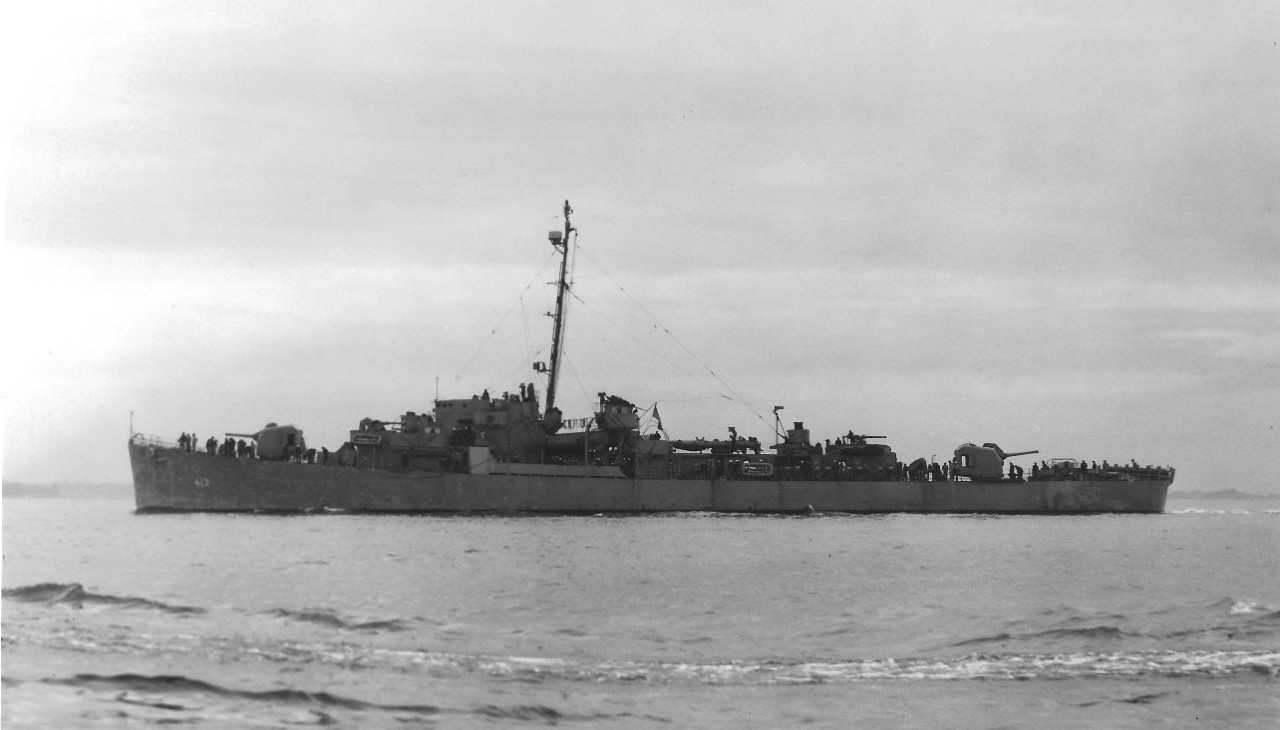

Last week, ocean research company Caladan Oceanic and travel company EYOS Expedition announced the discovery of what it claims to be the deepest shipwreck yet: the USS Destroyer Escort Samuel B. Roberts. It rested on a slope with a depth of up to 6,895 meters (22,621 feet). To compare, the USS Johnston that Caladan discovered last year was at a depth of 21,223 feet. The ship itself was broken into two parts 32 feet apart.
Shortly after, the US Navy issued a release confirming the finding of USS Samuel B. Roberts off the coast of the Philippines.
“This expedition has been a solid combination of historical detective work and cutting edge, innovative technology. The team onboard are well versed in delivering highly technical operations in the hadal zone—the deepest areas of our ocean,” Kelvin Murray, the expedition leader onboard DSSV Pressure Drop, told PopSci. “Despite all the research, technology and expertise, it is fair to say that a certain amount of luck helps in finding deep ocean shipwrecks.”
[Related: An inside look at the first solo trip to the deepest point of the Atlantic]
Experienced sub pilots, divers, sonar specialists and a collection of tech assets helped make the mission possible. Here are a few of the innovative pieces of equipment the team relied on—and what they do:
The DSV Limiting Factor: A submarine built for two
The Deep Submergence Vehicle (DSV) Limiting Factor is a full ocean depth submersible constructed by Triton Submarines. It’s 15 feet long, 9.2 feet wide, and 12.2 feet high, and can hold two passengers inside. It can dive to a depth of 36,000 feet for more than 16 hours. The titanium-sheathed sub also has viewports, cameras, external LED lights, a manipulator arm for taking biological and geological samples, emergency release systems, and 96-hour emergency life support.

A suite of fast-mapping sonars
Sonars send out and receive acoustic pulses. The bounceback on a pulse can provide information on if there are objects underwater and how far away they are. Some sonar devices can create pictures based on the signals it gets back. Those devices take signals that reflect off of hard objects to create dark areas, and soft objects, like sand, create light areas. Various types of sonars are usually combined together to create a full picture of the seafloor as the vehicle carrying the devices travels across it. The Kongsberg EM-124 multibeam sonar built into the ship is able to collect images of the seabed and water column, and map the topography of the seafloor. As for the other sonars on the mission, the submersible is equipped with a Kongsberg Mesotech 1,000 high-frequency forward looking sonar and a side scan sonar custom built for Caladan by Deep Ocean Search.

A trio of rovers
Three landers, called Flere, Skaff and Closp, tagged along on the mission to aid in data collection and navigation. They come with navigation beacons, strobe lights, cameras, traps for marine animals, tools for collecting biological and geological samples, and sensors for measuring metrics like temperature, salinity, and depth. It can communicate with scientists on the ship through an L3 acoustic modem.
[Related: James Cameron doesn’t think his deep-sea diving record was broken. So we investigated.]
The ship itself
The ship DSSV Pressure Drop is a considerable asset all on its own. It was originally built in 1985 by the US Navy to hunt submarines during the Cold War, Murray says. It passed to the National Oceanic and Atmospheric Organization in 2002 before Caladan Oceanic acquired it in 2017. It has a top speed of 10 knots and can accommodate up to 47 people. It also hosts several research labs onboard.
Caladan said in a press release that it would donate all the data related to the dive—sonar maps, videos, and images—to the US Navy.
Next up, Caladan looks to put its systems to the test in the Mariana Trench in early July, with four planned dives at the Challenger Deep.
